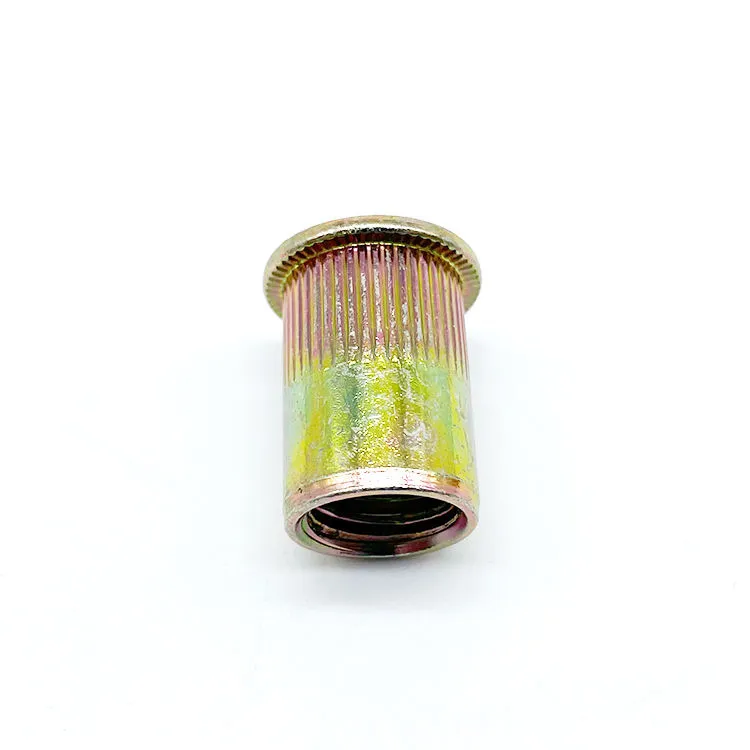

m16 washer diameter
10月 . 10, 2024 12:46 Back to list
m16 washer diameter
Understanding the M16 Washer Diameter A Comprehensive Overview
When working with mechanical components, particularly in engineering and construction, the importance of selecting the right fasteners and accessories cannot be overstated. Among these, washers play a critical role in ensuring the reliability and effectiveness of the assembly. In this article, we will delve into the specifics of the M16 washer diameter, its applications, and why it matters in mechanical systems.
What is an M16 Washer?
The designation M16 refers to a metric screw or bolt that has a nominal diameter of 16 millimeters. Washers are used in conjunction with these fasteners to distribute load, prevent damage to surfaces, improve sealing, and reduce the chances of loosening over time due to vibration. Washers come in different shapes, sizes, and materials, with varying functionalities, but in this discussion, we will focus specifically on the diameter aspect.
The M16 washer comes in various types including flat washers, spring washers, and locking washers, each serving specific purposes based on the application.
M16 Washer Dimensions
The standard dimensions of an M16 washer vary based on its type. For example, a flat washer designed for an M16 bolt typically has an outer diameter of approximately 32 millimeters and an inner diameter of about 16.5 millimeters. These dimensions ensure that the washer fits securely around the bolt while effectively distributing the load over a wider surface area.
Material Considerations
The material used for M16 washers is as vital as the dimensions themselves. Common materials include steel, stainless steel, nylon, and other alloys that can resist various environmental factors. For example, stainless steel washers are advantageous in corrosive environments, while nylon washers offer insulation and vibration absorption. The choice of material not only affects the durability of the washer but also its compatibility with other components in the assembly.
Applications of M16 Washers
m16 washer diameter

M16 washers are widely used across various industries including automotive, construction, manufacturing, and aerospace. In automotive applications, they are commonly found in engine assemblies, suspension systems, and bodywork attachments. In construction, M16 washers play an essential role in securing beams, frames, and structural components ensuring safety and stability.
The use of M16 washers is not limited to industrial applications; they are also found in DIY projects and home repairs where ensuring tightness and load distribution is necessary.
Importance of Proper Selection
Choosing the right M16 washer diameter and type is crucial for several reasons
1. Load Distribution Washers help in spreading the load across a wider area which can prevent damage to softer materials or surfaces. 2. Prevention of Loosening Using the correct type of washer, such as spring or locking washers, can significantly reduce the chances of fasteners loosening due to vibrations or thermal expansion.
3. Sealing Properties Certain washers are designed to create a seal and prevent moisture ingress, essential in high-stress environments.
4. Cost Efficiency Utilizing the appropriately sized washer can reduce the risk of component failure, which can lead to costly repairs and downtimes.
Conclusion
In conclusion, the M16 washer diameter plays a fundamental role in ensuring the efficiency and reliability of bolted connections across various applications. Understanding the dimensions, materials, and proper applications of these washers is essential for engineers, manufacturers, and DIY enthusiasts alike. By selecting the right M16 washer, one can enhance the performance and longevity of mechanical assemblies, making it a small but crucial component in engineering and construction projects. Whether you are tightening a simple bolt or designing a complex machine, the M16 washer is a key player in achieving secure and effective results.
Latest news
-
Hot Dip Galvanized Bolts - Hebei Longze | High Strength, Corrosion Resistance
NewsAug.01,2025
-
High-Strength Hot Dip Galvanized Bolts - LongZe | Corrosion Resistance, Custom Sizes
NewsAug.01,2025
-
Best Self Tapping Screws for Drywall - Fast & Secure Installation
NewsJul.31,2025
-
High-Strength Hot Dip Galvanized Bolts-Hebei Longze|Corrosion Resistance&Customization
NewsJul.31,2025
-
Hot Dip Galvanized Bolts-Hebei Longze Metal Products|Corrosion Resistance&High Strength
NewsJul.31,2025
-
Hot Dip Galvanized Bolts-About LongZe|High Strength, Corrosion Resistance
NewsJul.30,2025

